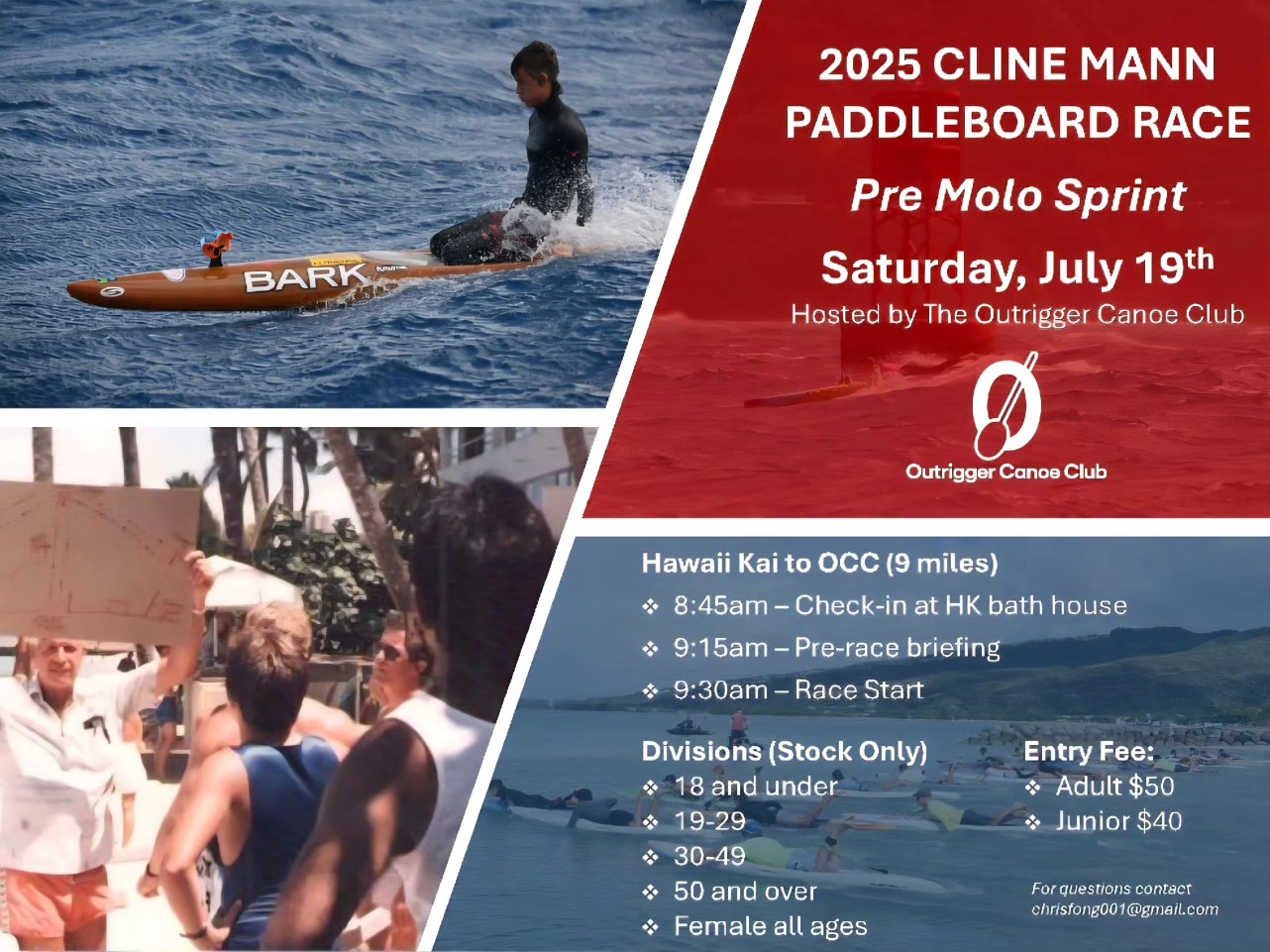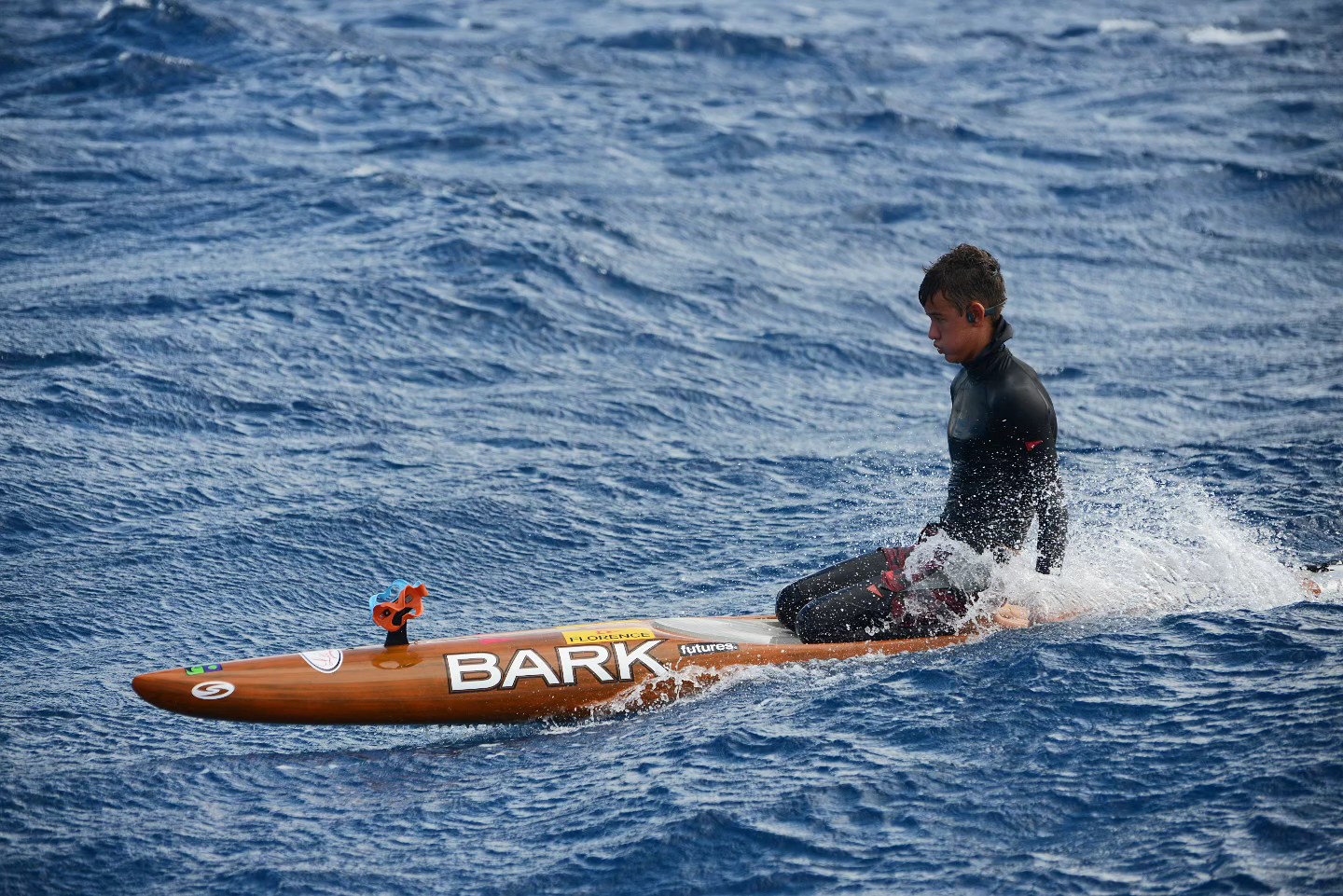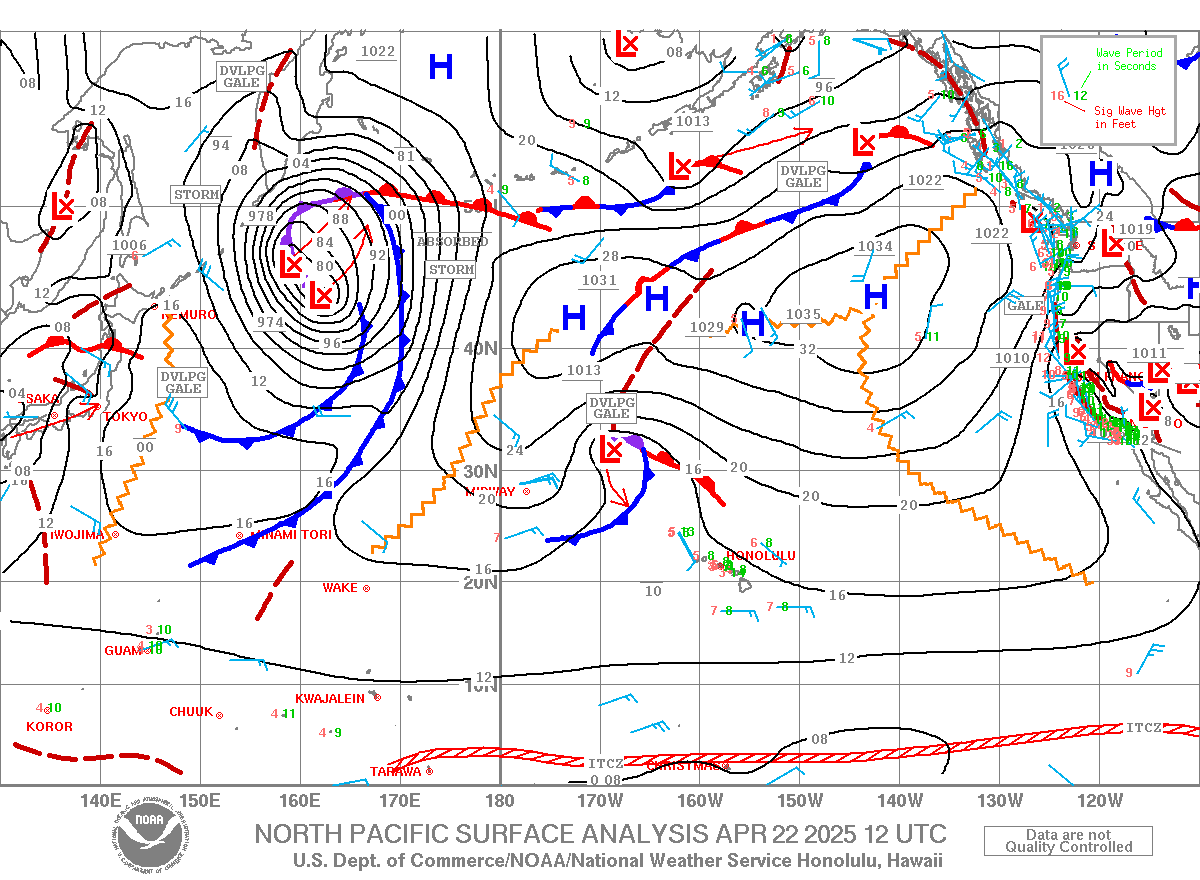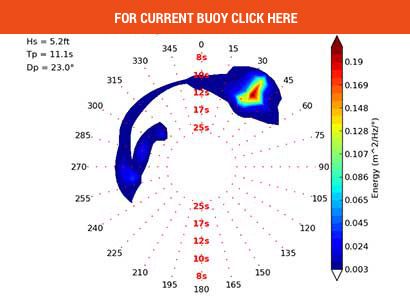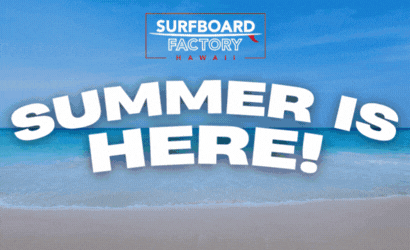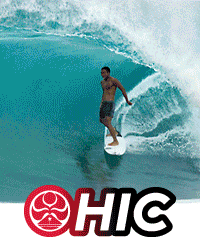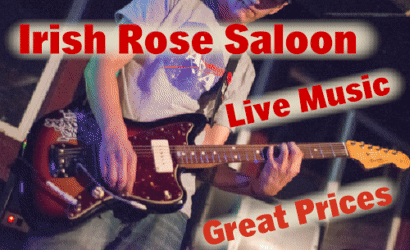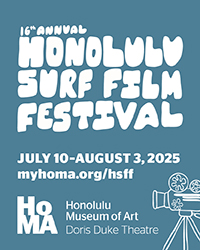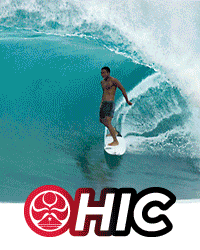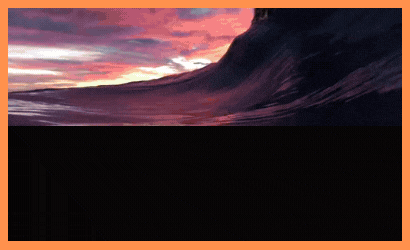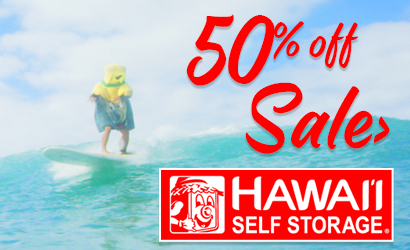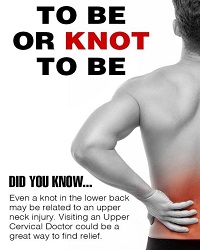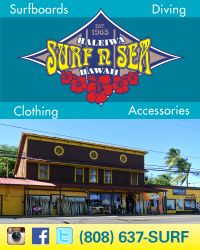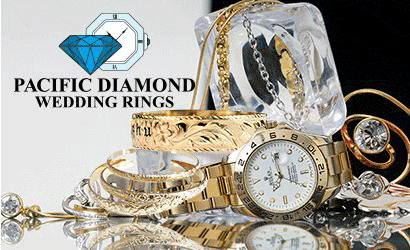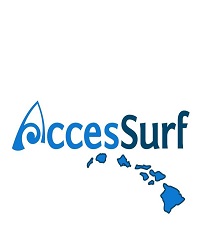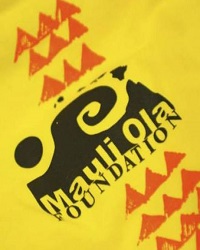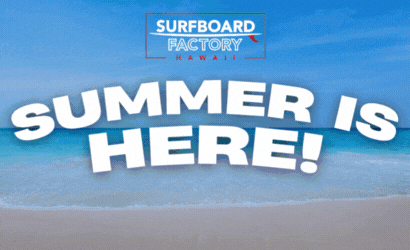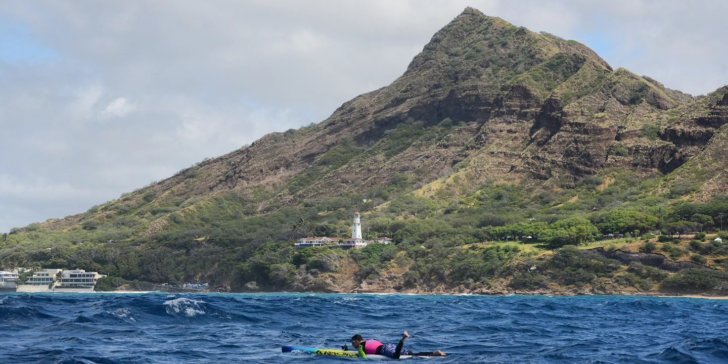
Hosted by Outrigger Canoe Club
This legendary ocean race kicks off July 19 — don’t miss your chance to be part of the action 
Who Was Cline Mann?
Cline Mann is the person most responsible for prone paddleboard racing at the Outrigger Canoe Club. Although he was never a paddler, he encouraged members and non-members to take up the sport and was an inspiration to all. Cline is considered by many to be the father of modern paddleboard racing in Hawaii.
He commissioned two 14-foot paddle boards in 1960 from Swimm Boats by Shepherd & Daniels. He loaned the boards to OCC members so they could compete in races, primarily the Diamond Head Race and the Lanai-Maui race.
When Waikiki Surf Club cancelled its 20-year sponsorship of the annual Diamond Head paddling championships in December 1974 just days before the scheduled event, Cline stepped in at the last minute, got a sponsor and personally put on the race on Christmas Day. A few weeks earlier on December 1, 1974, not knowing that the Christmas race was in jeopardy, he put on the Outrigger Canoe Club’s first paddleboard race for members only, as a warm up for the Diamond Head race. The Club continued to sponsor the Christmas race through 1977. The race had three divisions: open, paddleboard and surfboard.
A New Class Introduced
According to OCC member and boat designer Joe Quigg, the open class paddleboard which was 20-feet long at the time was killing the sport due to its size and storage problems. In 1978 Cline convened a meeting with paddleboarders including Dale Hope, Donny Mailer, Quigg and George Downing and surfboard shapers to figure out what could be done to get more people back into the sport. They recommended a new stock board class: 12-foot, 20-pound minimum with no mechanical rudder. The board could be built in any backyard out of a Clark 12-foot foam blank.
Cline wrote the board classifications as follows:
Stock Board: Maximum length 12 feet; minimum weight 20 pounds; no rudder allowed. This latter restriction includes any movable device which can be used by the paddler to turn or alter the direction of the board while under way. No other restrictions as to dimension, shape, material or design.
Surfboard: Length: Maximum 12 feet, minimum 10 feet; minimum weight 15 pounds; design: conventional surfing shape with skeg, capable of being surfed, turned in either direction and tacked across a wave by a rider in standing position.
Cline asked Quigg to build a prototype to show prospective paddlers. The Stock Board class caught on right away and started growing. Stock boards are still popular and being raced today. They still meet the length and rudder requirements but are are lighter due to new materials.
Waikiki Ocean Paddleboard Races Begin
In 1978 Cline announced the Outrigger would sponsor a new 10,000 meter open ocean, closed course race beginning and ending at San Souci Beach that would include rounding the Diamond Head and Wreck Buoys. He said that for the first time there would be a single paddleboard class only, the stock board suggested by his committee. The first OCC Waikiki Ocean Paddleboard Race was held in December 1978. A second 10K race was added in August 1979. They became annual events in Summer (August) and Winter (December) each year.
His goal, Cline stated, was to elevate paddleboard racing to national and international prominence and possible inclusion in the Olympic Games. To encourage paddlers to enter, the Club charged no fees and gave out t-shirts, lunch and awards. (One year when there was no money for lunches, the Paddleboard Committee made sandwiches for everyone.)
“Since the main thrust of the race is to find the world’s fastest paddler, the Outrigger has simplified the race rules which represent a radical departure from tradition,” he said. “Beginning this year, the single board class will have only three specifications: a minimum weight of 20 pounds, a maximum overall length of 12-feet and there will be no rudder.”
“The deletion of the two traditional board classes–open (unlimited) and paddle (stock board) class will serve to equalize competition and most importantly, by standardizing boards, it minimizes the influence of the board on the ultimate performance of the paddler,” he said.
There were no requirements or restrictions involving board design, material, dimension or shape. A woman’s division was added for the first time.
Surfboard maker George Downing made 12 boards available to paddlers in the races.
Leading the Charge
Dressed in his faded aloha shirt and shorts, Cline oversaw every aspect of the races: sending out the invitations, setting the course (he was a surveyor by profession), putting the buoys in place on race day, greeting paddlers, giving pre-race instructions, standing in the water to signal each paddler’s finish, giving out the awards and finally holding court at Corinthian Corner on the Hau Terrace and sharing his favorite brew, Bud Light, with his legion of fans.
Cline pioneered the race day photo, requiring all participants to stand in front of their boards on the beach before the start of the race. That tradition continues in all OCC races.
Summer Surf Race Added
In 1981, the annual Summer Surf Paddleboard Race was added. The race came about because several paddlers were winning all the flat races and it seemed like no one else could earn that spot. The surf race provided a new challenge. The race started at San Souci, with paddlers heading out the Kapua Channel to a buoy one-half mile out, turning and catching a wave back in. Each paddler made three trips back and fourth. Women and kids did two laps. It was a return to 1908 when this was the traditional method of surfboard racing. The race has now been renamed Scratchfest.
As the years passed and paddleboards changed to new lighter materials, Cline added new divisions to races: an unlimited class was created for paddleboards with a rudder system and a class for stand up boards (SUP). He might not have liked the changes, but he always wanted the competition to be fair and the records to be meaningful and the sport to flourish.
Races Named for Cline
Without his knowledge, in 1985 the Paddleboard Committee wanted to pay tribute to Cline for his many contributions to paddleboard racing and changed the name of the Summer Waikiki Ocean 10K Race to the Cline Mann Paddleboard Race and reduced the distance to 5,000-meters. Cline was shocked that the committee had been able to do this without his finding out.
Cline Mann shows paddlers the race course.
Cline Mann shows paddlers the race course.
After Cline’s death in 1996, the Paddleboard Committee changed the Cline Mann 5K to the Cline Mann Memorial Ko`olaupoko Paddleboard Race. The new race started in 2000 and is a 15-mile course from Makai Pier at Makapuu to the Club beach. Cline had long thought about such a race because of the challenge it offered and because it hadn’t been done.
Today’s Cline Mann Ko’olaupoko and Scratchfest races start with a tribute to Cline. When racers are lined up along the water’s edge, the starter slowly pours the contents of Cline’s favorite brew, Bud Light, from a can. When the last drop is spilt, the race begins.
The Ko’olaupoko race draws competitors from all over the world and leads to the Molokai 2 Oahu Paddleboard Race (M2O) two weeks later. One of the founders of the original M2O races was a young man, Dawson Jones, who Cline introduced to the sport and supported in major competitions.
In the early years, participants in the paddleboard races were mostly Outrigger members and lifeguards. Over the years that number has grown to include paddlers from all over the state, country and world. In addition to the two paddleboard races that Outrigger continues to sponsor, Cline’s influence has been felt in the greater community where numerous paddleboard races are now held around the island.
Cline was interested in paddleboard racing long before he got involved with the Christmas Day race. Growing up he followed notable pioneers of 20th Century paddle boarding, including Gene “Tarzan” Smith and Tom Zahn of California. Smith was navigating the channels between Hawaii, Maui, Molokai, Oahu and Kauai on a 90-pound wooden paddleboard in the 1930s and 1940s. Considering Smith’s equipment, his feat is even more remarkable. Zahn was a Santa Monica lifeguard who paddled the Molokai Channel in 1953 but never tried to duplicate Smith’s other endeavors. Using Joe Quigg paddleboards, he won the Catalina Channel race five times and the Diamond Head Paddleboard Championship four times.
The Tradition Continues
Brendan Shea won the 1992 Cline Mann 5K.
But it was Cline who made sure that paddleboard racing survived by offering competition on a consistent and fair basis. It was Cline’s idea to enable more paddlers to participate by offering a board that did not have the advantage because it was made from costly materials. This kept the sport fair for many years. As new materials became more affordable decades later, lighter boards entered the arena. It took convincing but Cline eventually allowed the lighter boards into the OCC races. His fear was that the older records would be wiped out with the lighter, faster boards.
For four decades Cline introduced paddleboard racing to hundreds of Junior ‘Riggers, many of whom shared their love of the sport with their children and grandchildren. Some remember him picking them up at the Club at 5 a.m. and driving them and their boards to Hawaii Kai so they could get in a training paddle before school.
Cline devoted most of his adult life to Outrigger in many different capacities. But the paddleboard community will never forget how he kept their sport alive and thriving.
* * * * *
Born January 11, 1923, Cline Mann joined the Outrigger Canoe Club in April 1938. He was a member of the Class of 1941 at Punahou School where he was captain of the swimming team. Then he was off to the mainland to Dartmouth College where he swam freestyle and backstroke events, graduating in 1944 with a degree in civil engineering. He was a surveyor by profession and was a recognized authority in Hawaii ahupua`a (land divisions).
Water sports were Cline’s forte. He was the Club Champion in Sunfish and Scorpion sailing and passed on his sailing skills to a multitude of younger members, some of whom became champions. Never a canoe paddler, he was a helper on dozens of Molokai canoe race crews beginning in 1960, designing the change charts and providing other support to our crews. His contributions to paddle boarding are legendary.
As our Club President in 1964, he saw the Club through the growing pains of transition between the new and old clubs after chairing both the Planning and Building Committees. He served on the Sailing, Volleyball, Paddleboard and Canoe Racing Committees. He served as Club Captain from 1965-1967 and represented the Club in the Hawaiian Canoe Racing Association for eight years.
When the Honolulu Marathon started, Cline decided that as a community service, Outrigger should sponsor an Aid Station on Kahala Avenue for runners. With a small group of friends he organized the event for 25 years, overseeing the prep, set up and tear down. More than 100 members staffed the station each year on marathon Sunday. The station was open from 5 a.m. until the last runner passed it, often late in the afternoon. His leadership was legendary.
Cline was elected to the Club’s prestigious Winged “O” and to Life Membership in the Club.
After Cline’s death on September 16, 1996, monetary donations to the Outrigger Duke Kahanamoku Foundation provided for a fund designated for water sports and paddle boarding. Contributions to that funds are welcome.


